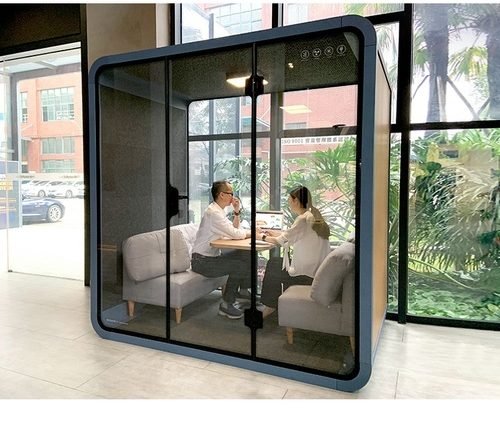 Meetings are a vital part of any organization, but they can also be a source of distraction and noise in an open office environment. Soundproof meeting booths provide a private and quiet space for meetings, allowing for maximum productivity and confidentiality. In this article, we will explore tips and tricks for creating an optimal soundproof meeting booth.
Meetings are a vital part of any organization, but they can also be a source of distraction and noise in an open office environment. Soundproof meeting booths provide a private and quiet space for meetings, allowing for maximum productivity and confidentiality. In this article, we will explore tips and tricks for creating an optimal soundproof meeting booth.
Tip #1: Choose the right location
The first step in creating a soundproof meeting booth is to choose the right location. Look for a space that is away from high-traffic areas and has minimal noise from outside sources. Ideally, the space should be free from echo and reverberation, which can distort sound and make it difficult to hear.
Tip #2: Use soundproof materials
To create a soundproof meeting booth, you will need to use materials that absorb or block sound. This can include acoustic panels, soundproof curtains, and acoustic foam. When choosing materials, consider their noise reduction coefficient (NRC) rating, which measures how much sound they can absorb. The higher the NRC rating, the more effective the material will be at reducing noise.
Tip #3: Seal all gaps and leaks
Even the smallest gap or leak can let in unwanted noise. To create an optimal soundproof meeting booth, it is essential to seal all gaps and leaks in the room. This includes sealing the door, windows, and any other openings with weatherstripping or acoustic sealant. You may also need to install a soundproof door or window if the existing ones are not effective at blocking noise.
Tip #4: Consider the room layout
The layout of the room can also impact its soundproofing capabilities. It is best to avoid hard surfaces, such as glass or concrete, which can reflect sound and create echoes. Instead, use soft materials, such as carpets and upholstered furniture, which can absorb sound. You should also consider the placement of furniture and equipment to minimize noise and maximize privacy.
Tip #5: Use white noise or sound masking
In some cases, even a soundproof meeting booth may not be able to block all outside noise. In these situations, you can use white noise or sound masking to help reduce the impact of the noise. White noise is a steady, constant sound that can help mask other sounds, while sound masking uses low-level ambient sound to create a more pleasant environment.
Tip #6: Test the room acoustics
Once you have set up your soundproof meeting booth, it is essential to test its acoustics. Use a decibel meter to measure the sound level in the room and make adjustments as needed. You may need to add more sound-absorbing materials or seal any remaining gaps to achieve optimal soundproofing.
In conclusion, creating an optimal soundproof meeting booth requires careful planning and attention to detail. By choosing the right location, using soundproof materials, sealing all gaps and leaks, considering the room layout, using white noise or sound masking, and testing the room acoustics, you can create a private and quiet space for meetings. This will not only improve productivity but also ensure confidentiality and enhance the overall meeting experience.